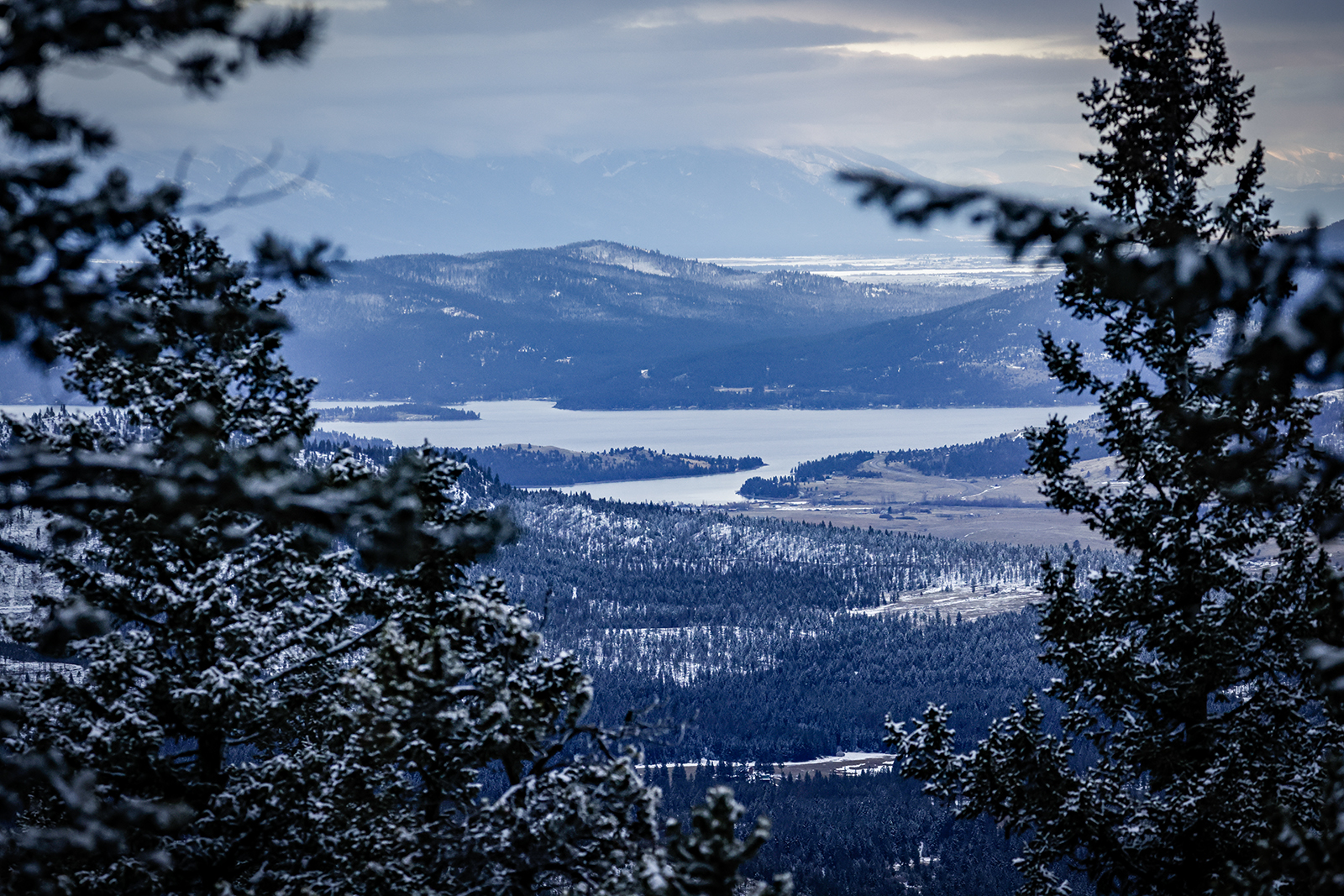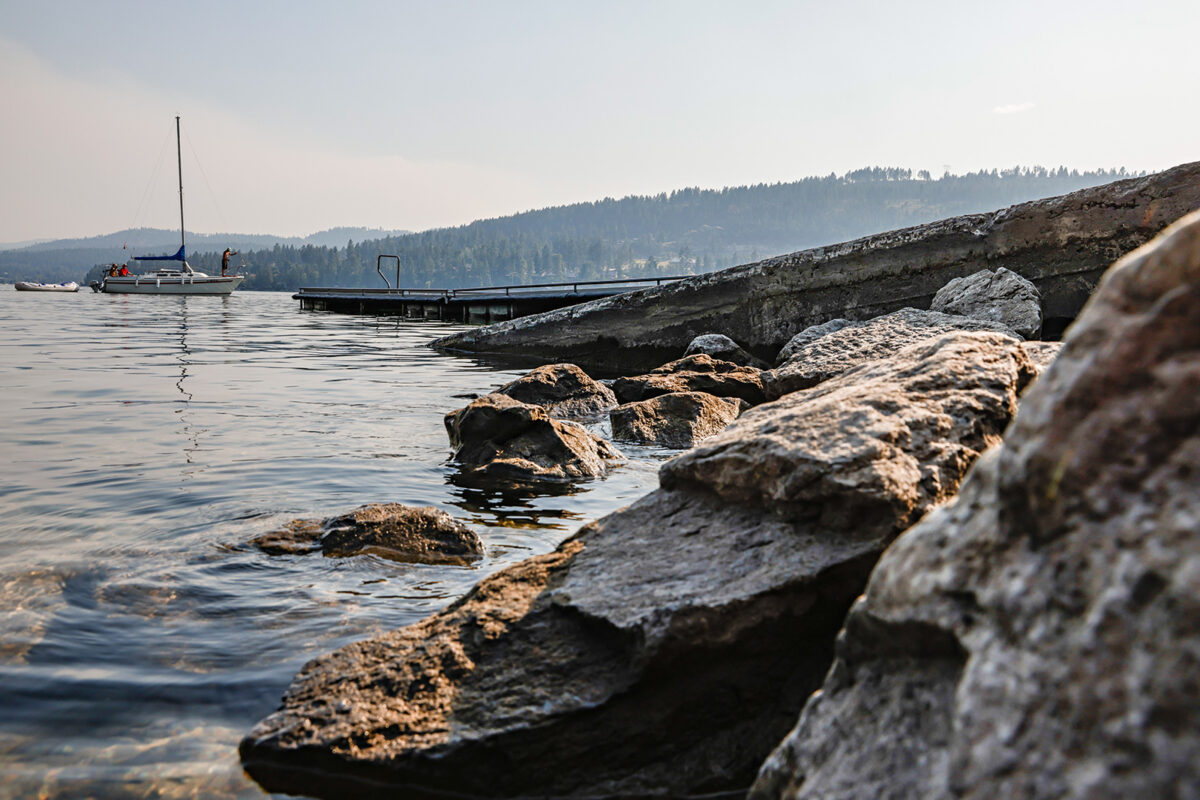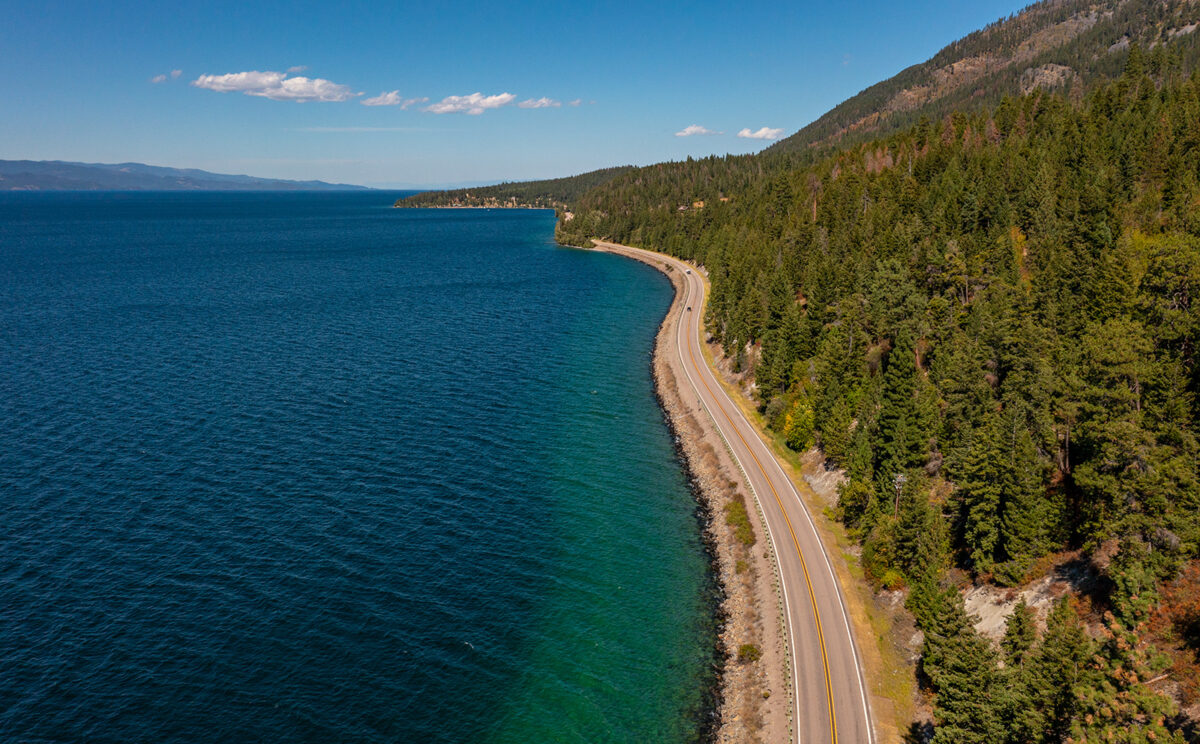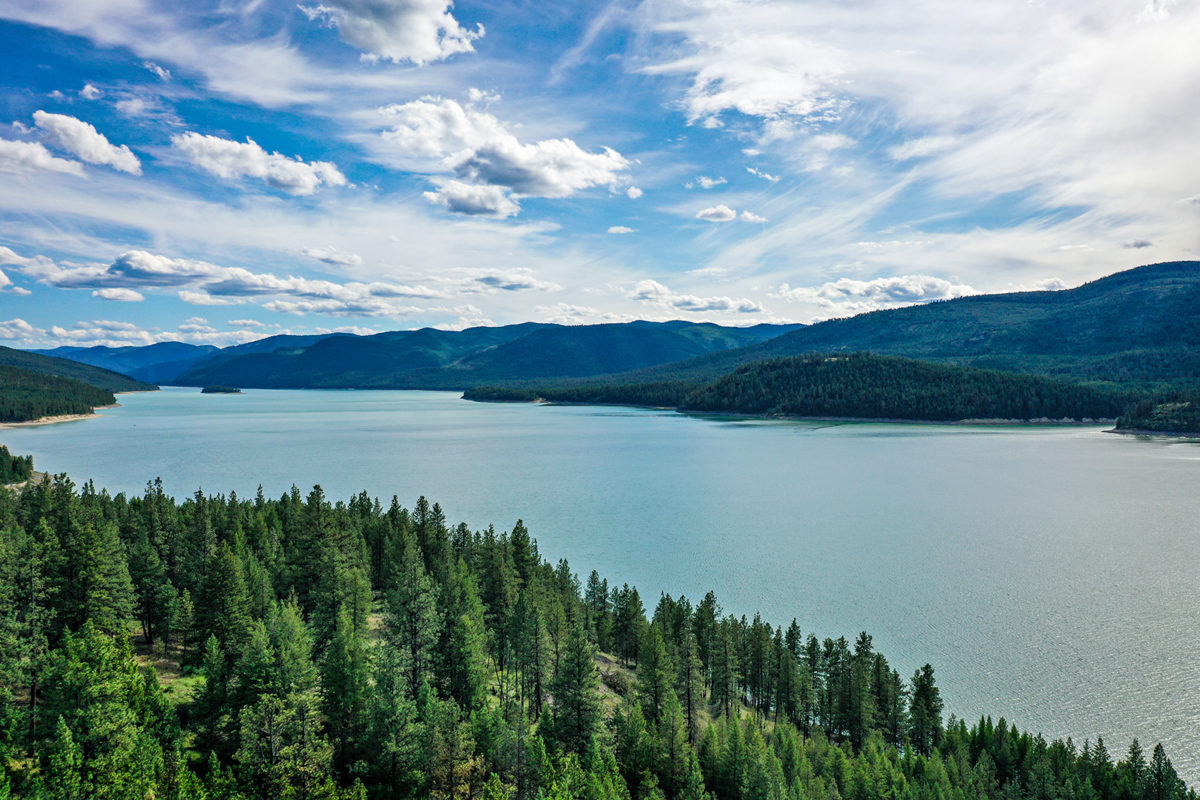EPA Awards Western Montana Conservation Commission $7 Million to Safeguard Critical Headwaters
The newly consolidated regionwide water-quality watchdog will use the funding to address stormwater and septic leachate in the Columbia River Basin headwaters
By Tristan Scott
Last spring, when the Montana Legislature fused the powers of two existing water-quality watchdog groups, the genesis of the concept was to form a single entity with broader geographic dominion. Although the legislative action was part of Gov. Greg Gianforte’s “red tape reduction” initiative, proponents saw the merger as an opportunity to broaden the regional scale of stewardship to encompass watersheds spanning Montana’s entire west slope.
For years, administrators for the Montana Department of Natural Resources and Conservation (DNRC) had been angling to expand and combine the powers of the Flathead Basin Commission (FBC) and the Upper Columbia Conservation Commission (UC3), conjoining the entities’ shared objectives with a single unifying tent-pole.
Under the new Western Montana Conservation Commission (WMCC), the horizon has expanded to include the Kootenai River, the upper and lower Clark Fork River and the Bitterroot River, as well as a host of other drainages and tributaries.
Although some stakeholders expressed misgivings that the merger would dilute focus on critical headwaters in the Flathead, others saw an opportunity.
Having previously served as executive director of both the FBC and the UC3, as well as the environmental coordinator for the city of Kalispell, Casey Lewis fell into the latter camp. So, when her bosses at the DNRC tabbed her to lead the newly configured WMCC, she set her sights on procuring an ambitious $7 million federal grant from the U.S. Environmental Protection Agency (EPA).
“I am particularly sensitive to the concerns about diluting the impact on the Flathead, both because of my former role working with the city as well as my relationship with the Flathead Basin Commission,” Lewis told the Beacon last April. “I hear where these concerns are coming from. But it’s written into the statute that there will be a continued focus on the Flathead and there are a lot of other benefits to this expansion, including being able to draw from a greater pool of partners and people, as well as financial resources.”
Those financial resources materialized last month when Lewis and the newly minted WMCC learned they’d been awarded a $6,998,075 EPA grant through the Bipartisan Infrastructure Law, as well as a matching contribution of $2,332,692. The financial support enables WMCC to pursue a groundbreaking regional initiative aimed at mitigating toxic pollution in the headwaters of the Columbia River Basin; specifically, the funding allows the organization to implement stormwater and septic leachate toxic reduction subaward programs, coupled with extensive education and outreach endeavors to western Montana communities beset with challenges related to regional populations spikes and intensifying development pressures.
“I became aware of this funding opportunity when I was at FBC, before we knew we were going to consolidate,” Lewis said recently. “In my mind, if we were still just focusing on one watershed, I don’t think we would have had the same eligibility. It’s really exciting to be able to start the year off with more money than we have historically had, and which can help make some direct impacts on the ground.”
With a focus on pollution elimination, water quality improvement, runoff reduction, and citizen engagement, WMCC’s multifaceted approach includes the implementation of stormwater and septic leachate toxic reduction subaward programs, coupled with extensive education and outreach endeavors. These initiatives are strategically designed to empower communities, enhance local knowledge, and involve citizens in safeguarding their water resources.

“This funding empowers us to engage with communities, understand their unique needs, and provide them with the tools to address toxic pollution, thereby improving the health of their surroundings,” Lewis said. The WMCC will allocate funding that focuses on Tribal, rural, and low-income areas, Lewis explained, adding that she views the initiative as a timely response to the challenges posed by rapid development, aiming to bolster the resilience of Montana’s communities and empower them to actively participate in the conservation of the state’s water resources.
As the Intermountain West records unprecedented population growth and Montana is one of the fastest-growing states in the nation, with Flathead County growing its population by 15% in the past decade, Lewis said the blended commission maintains the wherewithal to keep tabs on the Flathead Valley and beyond.
“At a time when Montana is experiencing rapid development, it is imperative to proactively address stormwater and septic leachate pollution to safeguard the pristine water resources that are integral to Montana’s ecology, recreational activities, economy, and culture,” Lewis said.
In addition to the WMCC’s federal award, both the Flathead Lake Biological Station and the Confederated Salish and Kootenai Tribes received EPA grants of $6.6 million and $3 million, respectively, to address water-quality issues centered on pesticide pollution and waterborne illness. Funding eligibility was open to agencies and organizations within the entire Columbia River Basin, which covers an area of 260,000 square miles, reaches 17 federally recognized Tribes and seven states — Montana, Idaho, Washington, Oregon, Wyoming, Nevada, and Utah. The Columbia Basin provides not only significant ecological benefit to these regions, but also supports critical economic industries, such as commercial fisheries, agriculture, forestry, recreation, and electric power generation. Montana’s portion of the Columbia Basin includes the Clark Fork, Kootenai, and Flathead rivers.
For Lewis, the grant awards served as validation for the importance of the work of the WMCC and its partners.
“Not only did we get awarded this grant, but the Flathead Lake Bio Station received a grant under the same call for proposals, and the CSKT received its toxic reduction grant, so it’s pretty amazing that this much money is coming to western Montana to address water quality issues,” Lewis said. “They all work synergistically and will be complementary to one another. We’re just really jazzed about how this is coming together.”
“We’ve got lots of work ahead in determining how to distribute the subawards, but it could help support and expand the septic maintenance reimbursement programs on Flathead Lake, and perhaps expanding that across western Montana or helping residents connect to main sewer systems,” she added as an example.

Despite the unprecedented rates of growth and development in western Montana, the state has no regulatory authority over nonpoint source pollution, which amounts to death by a thousand cuts for water quality. With the federal dollars in hand, WMCC is poised to step up to create education and awareness campaigns and resources about the importance of water quality, EPA officials said.
“EPA grants are helping local partners develop local solutions for pressing water quality challenges across the Columbia River Basin,” according to EPA Regional Administrator KC Becker. “This WMCC initiative will reduce contaminated runoff and septic pollution as Western Montana continues to develop and grow, with a focus on direct engagement with Tribal, rural and disadvantaged communities.”
The official work of the WMCC began in November, when Gianforte announced eight appointments to the WMCC, including Mike Koopal, executive director of the Whitefish Lake Institute, who will chair the new commission. Having previously served on the FBC’s executive committee and on the UC3’s early detection and monitoring committee for aquatic invasive species (AIS), Koopal’s appointment is further testament to a continued focus on the Flathead River Basin.
“We have an opportunity and responsibility to expand the successes of Flathead Basin Commission’s long 40-year history across western Montana. Coupled with the Upper Columbia Conservation Commission’s five-year history of successes in AIS monitoring and outreach efforts across the region, WMCC can engage with more groups and communities to address important water quality and natural resource issues,” Koopal said in a statement. “The Governor’s office has assembled a group of talented individuals to serve as commissioners and I look forward to working with them to protect our connected waters and our connected economy.”
The following individuals were appointed to serve on the commission:
- Private Industry Representayive: Sandy Beder-Miller – retired Pulp and Paper Process Engineer
- Electric Cooperative Representative: Duane Braaten – Flathead Electric Co-op Trustee
- Flathead River Basin Representative: Mike Koopal – Executive Director, Whitefish Lake Institute
- Private Citizen At Large: Phil Matson – Research Coordinator, Flathead Lake Biological Station
- Kootenai River Basin Representative: Lech Naumovich – Director and Ecologist, Greater Than Image, LLC
- Private Landowner: Mat Peterson – Civil Engineer, NewFields
- Hydropower Utility Industry Representative: Arthur Pots – Terrestrial Program Manager, Avista
- Upper Clark Fork River Basin and Blackfoot River Basin: Onno Wieringa – Recreation Business Owner and Manager
- Lower Clark Fork River Basin and Bitterroot River Basin: not filled

Together with the governor-appointed voting members, WMCC’s membership consists of seven additional voting members representing county commissions, conservation districts, wastewater or stormwater utilities, and the Confederated Salish and Kootenai Tribes’ (CSKT) natural resource department. The remaining 18 members of the commission are nonvoting and advisory, along with representatives from state and federal agencies.
Senate Bill 83 combined the roles and jurisdiction of the FBC and the UC3 effectively creating WMCC on July 1, 2023. The Nov. 2 and 3 meeting focused on commission foundations including: introductions, an overview of the history of FBC and UC3, duties and responsibilities, financials, by-laws, committees, and future work directions. In adherence to the statutory duties of the commission, potential and past projects include community education and outreach, supporting a comprehensive aquatic invasive species prevention program, and monitoring and preventing point and nonpoint source pollution.
“Since WMCC was established in July, we have been busy building upon the incredible foundations of FBC and UC3 to create a new organization. We’ve been meeting with new partners, continuing the work in our communities, sharing success at conferences across the U.S., and working with the Governor’s office to establish a diverse commission,” said Lewis. “I am impressed by the engaging energy of our new commission members as we begin this next chapter together to protect Montana waters.”
The next WMCC meeting will be held on Feb. 7-8 at the KwaTaqNuk Resort and Casino in Polson. For more information and to sign up for the WMCC newsletter, visit WesternMTWaters.com or contact Lewis at [email protected].